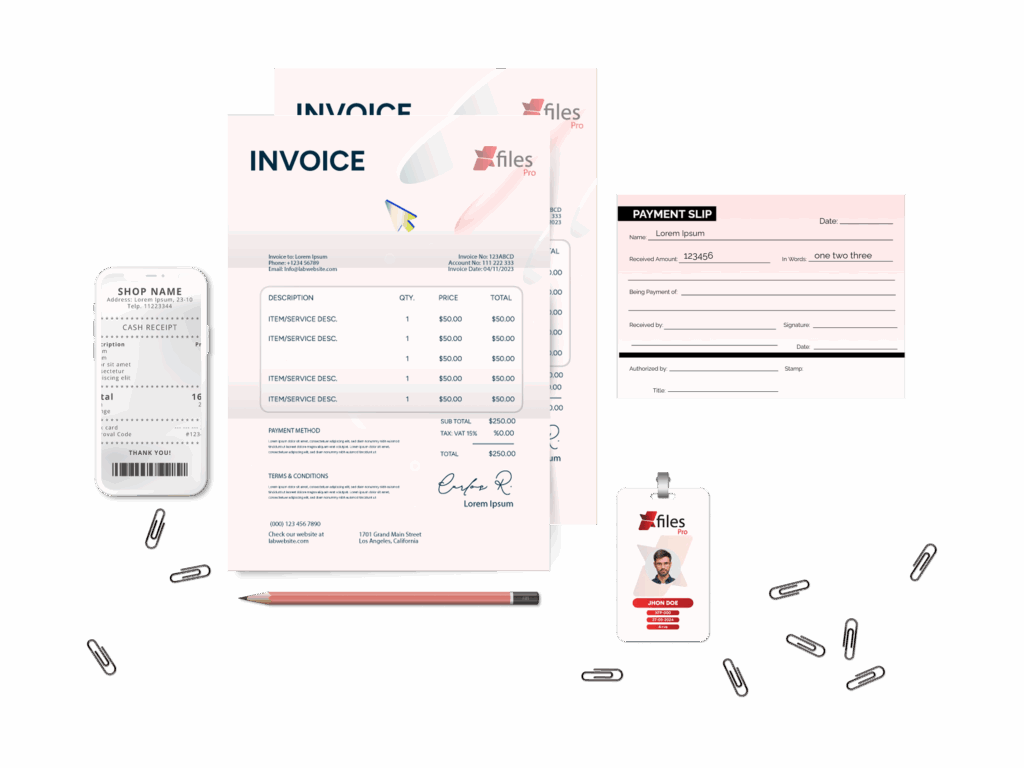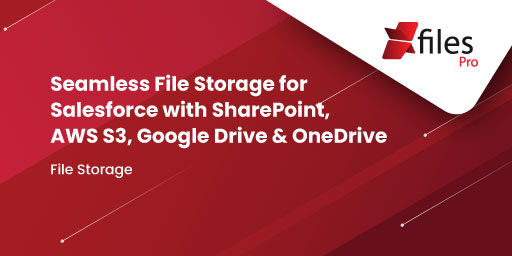Poornima G
In the manufacturing industry, managing documents goes beyond merely keeping things organized. It is essential for maintaining compliance, preventing delays, and ensuring that products arrive at the right location at the right time. From purchase orders to quality checks, each step in the process must be executed with precision to ensure this success.
But the harsh truth is that most teams are drowning in multiple documents, manual approvals, missed emails, and disorganized file & folders, hindering their efficiency and productivity.
So, how can manufacturing companies break free from document overload and build a system that truly works?
The Answer: Leveraging Salesforce with Smart Document Management Solutions
Why? Because Salesforce is transforming the way manufacturers operate. With Salesforce Manufacturing Cloud, you can do more than manage customer relationships. By connecting sales, operations, and partners on a single platform, you gain better visibility, smarter forecasts, and control over every step.
But even with all that power, there’s one thing that still clogs the gears: the document-heavy manufacturing process itself.
Think about it, Purchase Order Management, Production & Quality Control, and Inventory Management, they’re all document-heavy, approval-driven, and deadline-sensitive. If you’re still stuck in manual mode, it doesn’t matter how powerful your CRM is, you’re always prone to errors, delays, and inefficiencies.
That’s where document automation and external document management systems come in. When these integrate seamlessly with Salesforce, everything clicks into place. That’s when you stop wasting time on manual file management and start speeding up processes across the board.
In this blog, we’ll break down exactly how all of this fits into your manufacturing process—from purchase orders to quality control—and why automating documents is the next step in building a more efficient, scalable operation.
Purchase Order Management
Picture this. Your purchase team urgently needs to source materials for an upcoming manufacturing unit. They’ve found a few solid vendors, and it’s time to request quotes, negotiate pricing, and raise a purchase order.
Sounds straightforward? Not really.
Here’s how it usually plays out:
You raise a purchase request, which goes to the Department Head for approval and then to the Procurement Head. Once it’s green-lit, the RFQs go out, vendor quotes trickle in, and after some evaluation, you generate the Purchase Order(PO). The vendor confirms, shares invoices, and sets delivery timelines.
Production & Quality Control
Once the PO is confirmed and the materials start arriving, it’s time to get into the thick of production. This is where your operations team kicks into high gear, and where the paperwork continues to pile up.
From production schedules to inspection logs, everything needs to be tracked, verified, and approved
Here’s what the usual flow looks like:
- Materials are received and logged
- Work Orders are issued
- Production begins
- Quality checks kick in at different stages
- NCRs and inspection reports are generated
- Final product is approved or sent back for rework
You’re now managing Material Inspection Reports, WIP Checklists, QA Forms, NCRs, Compliance Certificates, and final QA sign-offs.
Inventory Management
With production rolling and quality checks in motion, it’s now up to inventory management to keep everything balanced. Raw materials in, finished goods out, and somewhere in between—real-time stock visibility is everything.
Sounds easy in theory, but in practice? Things can get chaotic fast.
Here’s how the typical flow goes:
- Goods are received and logged
- Inventory levels are updated manually
- Items are moved to production or storage
- Finished goods are recorded
- Dispatch and delivery details are entered
- Stock reports are generated for finance and procurement teams.
You’re now working with GRNs, Stock Transfer Forms, Inventory Count Sheets, Dispatch Notes, and Delivery Challans.
But even if you’ve managed to stay on top of these documents so far, it only takes one slip to disrupt the entire chain.
Here’s Why Manual Handling of Operational Documents Holds You Back
Let me ask you, if a document goes missing, how quickly can your team recover, and at what cost? And when documents are generated manually, how confident are you that every field is filled, every signature captured, and every version tracked?
If you don’t know the answer, or if your answer starts with “it depends,” that’s already a cause for concern.
Manual processes might’ve worked back when operations were simpler. But today? With everything moving fast and expectations even faster, managing documents by hand is like trying to race a jet with a bicycle.
If you manage your Purchase Orders, Vendor Quotes, and Work Orders manually, you already know the pain. One missed email, one outdated version of a BOM (Bill of Materials), or a missed detail in the Inspection Report can suddenly throw your whole workflow off balance.
You’ve probably seen it firsthand:
- That NCR (Non-Conformance Report) form that went missing just before a final quality audit
- The GRN (Goods Receipt Note) that didn’t make it to the inventory team in time
- The Dispatch Note that was saved in the wrong folder, delaying shipment
- The QA Certificate that never got signed off, holding up production
There is a risk of missing details when documents are created manually. This issue becomes more pronounced when there is no automated workflow for review and approval. As a result, you may be losing valuable production hours.
Many manufacturers assume that implementing multiple software solutions will be expensive and technically overwhelming, but that’s not the case.
A Heavy Equipment Manufacturing Industry, known for powering infrastructure with high-performance machinery like cranes and excavators, struggled with scattered files, poor folder sync, and unclear access controls.
That’s when XfilesPro stepped in. By streamlining document storage, syncing, and access management, they increased efficiency, saved time, and ultimately boosted overall productivity.
Meet XfilesPro: The Automated Document Management Suite You Need
XfilesPro is purpose-built for managing documents within Salesforce. It aligns seamlessly with your industry’s compliance and operational needs. Let me walk you through an example of how it simplifies your document management process.
Xtract: XfilesPros’ Own OCR

- Effortless Data Liberation - Extract text from scanned blueprints, checklists, and handwritten notes, no retyping needed.
- Precision Field Mapping–Auto‑map part numbers, batch codes, and inspection results to your Salesforce fields with pinpoint accuracy.
- Validation Workflows–Supports both automated and manual validation workflows for ultimate flexibility.
- Integration with Existing Flows–Plug Xtract into your existing Salesforce flows to trigger work orders, inventory updates, and more.
XfilesPro DocGen
Document Generation, Redefined for You
Template Creation & Management
Review & Approval Process
Document Generation
eSignature
As mentioned earlier, you’re certainly managing a large volume of documents. With XfilesPro DocGen, you can automatically generate documents tailored to your industry, company, or department.
- Industry-specific templates–Auto-generate RFQs, POs, and evaluation forms with manufacturing standards built in.
- Multiple department-level templates–Tailor templates for Purchase, Procurement, and Finance teams.
- Lifecycle defined at template level–Define clear document stages:
- draft
- review
- approved
- archived
- Set up approval levels–Route purchase requests through defined approval hierarchies—no manual chasing.
- Sequencing–Document flow:
- PR
- RFQ
- Vendor Quote
- PO, in perfect order
- E-signature–Accelerate sign-offs for faster vendor confirmation and order processing.
- Native editor–Make changes to inspection reports or QA forms on the fly, no need to download or re-upload.
From Purchase Orders to Final QA Reports and Delivery Notes, every document is generated, approved, and tracked inside Salesforce.
XfilesPro for Document Storage
Once the documents are generated, they typically sit in Salesforce’s primary storage, which isn’t unlimited and lacks advanced document management features. That’s where XfilesPro steps in.

XfilesPro brings powerful capabilities like:
Auto File Migration–Automatically move documents without manual effort. You can even schedule when and how often files should be moved.
Dynamic Folder Creation–Folders and subfolders are automatically created based on predefined paths whenever a new record is added.
See how XfilesPro can revolutionize your manufacturing workflow!
How you’ll benefit as a Manufacturer With XfilesPro
Integrating XfilesPro into your Salesforce org builds a seamless workflow. It brings structure, speed, and accuracy to every document your team handles—from the shop floor to dispatch.
Picture this: your shop floor running smoothly, no missing forms, no last-minute scrambles to find a drawing. XfilesPro makes that possible by eliminating manual bottlenecks and connecting every document to the right process, automatically.
Boosted Productivity
Automation can save up to 30% of your time. McKinsey reports that 60% of companies experience productivity gains through automation.
Centralized File Management
Studies show that employees spend an average of 2 hours a day searching for documents. With a structured, centralized file management system in place, your team could save up to 25% of a 40-hour week on more productive tasks.
Smarter Collaboration
When you’re working with dealers, vendors, and internal teams, collaboration is a must. With granular access control, only the right people can view, edit, or download documents. Sharing is easy, and everyone stays on the same page with real-time access to files on SharePoint, Google Drive, or AWS S3.
Compliance Made Easy
Manufacturers using automated document systems see up to 40% fewer compliance errors. XfilesPro helps meet OSHA, ISO, and industry standards. With version control, audit trails, and e-signatures, you avoid costly mistakes and stay audit-ready.
Scalable Storage
Scalable storage means you only pay for what you use, so as your business grows, your storage can grow with it, without the extra cost. More space when you need it, less waste when you don’t.
Full Document Lifecycle Automation
XfilesPro, with add-ons like Xtract and DocGen, automates the entire document lifecycle. Create, route, approve, and store manufacturing documents directly from Salesforce. No more manual work, just smooth, efficient workflows that save time and reduce errors.
Conclusion
In manufacturing, every document, whether it’s a purchase order, inspection report, or delivery note, carries weight. One delay, one error, or one missing form can halt production, increase costs, or compromise compliance. That’s why staying manual is risky.
Salesforce gives you the power to manage your customers and operations on one platform. XfilesPro takes it further by automating the document processes that tie everything together. You can achieve faster and accurate document generation, smoother production, smarter collaboration, and stress-free audits. For manufacturers looking to scale, reduce costs, and boost efficiency, document automation isn’t optional anymore—it’s the next step forward.





